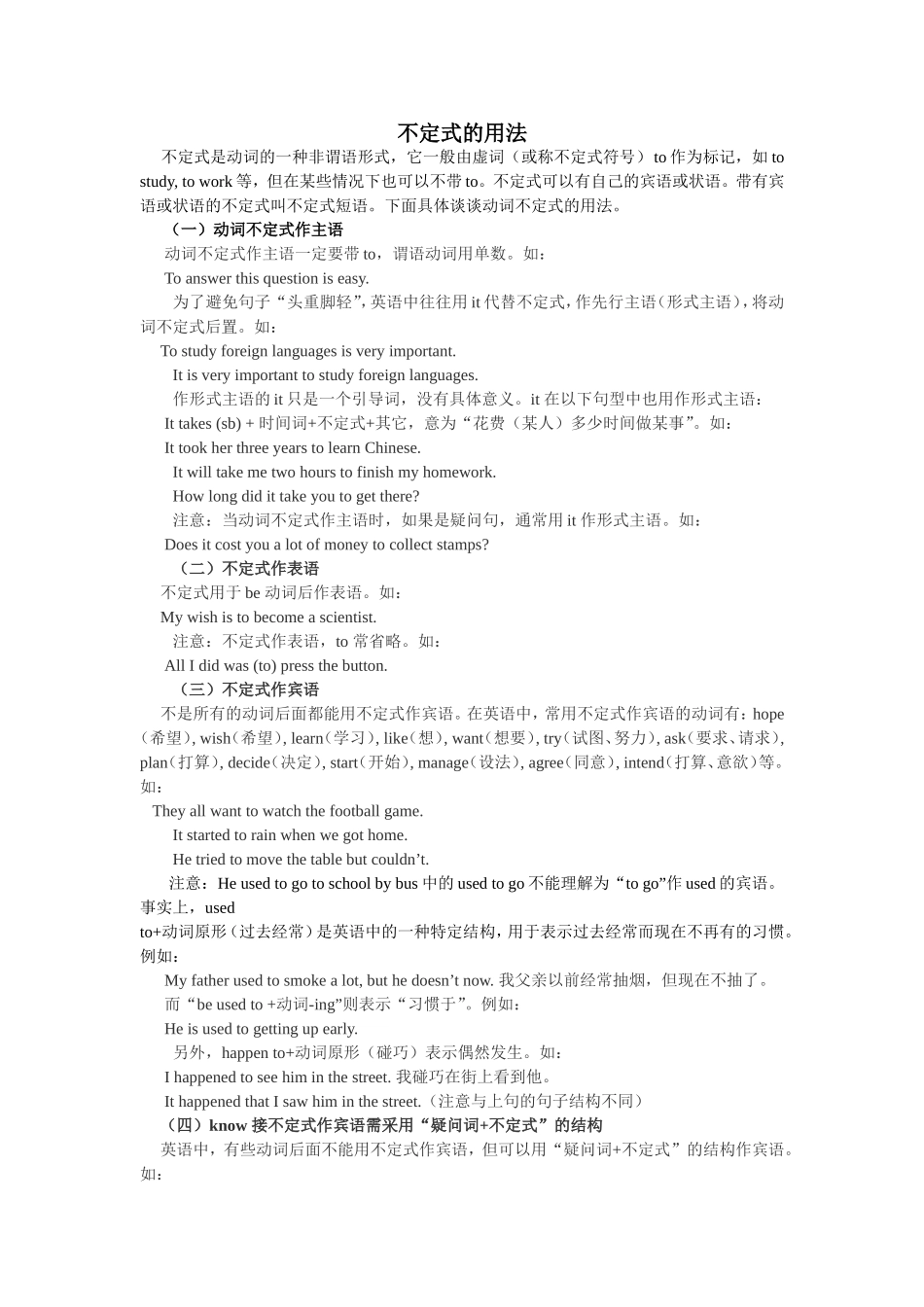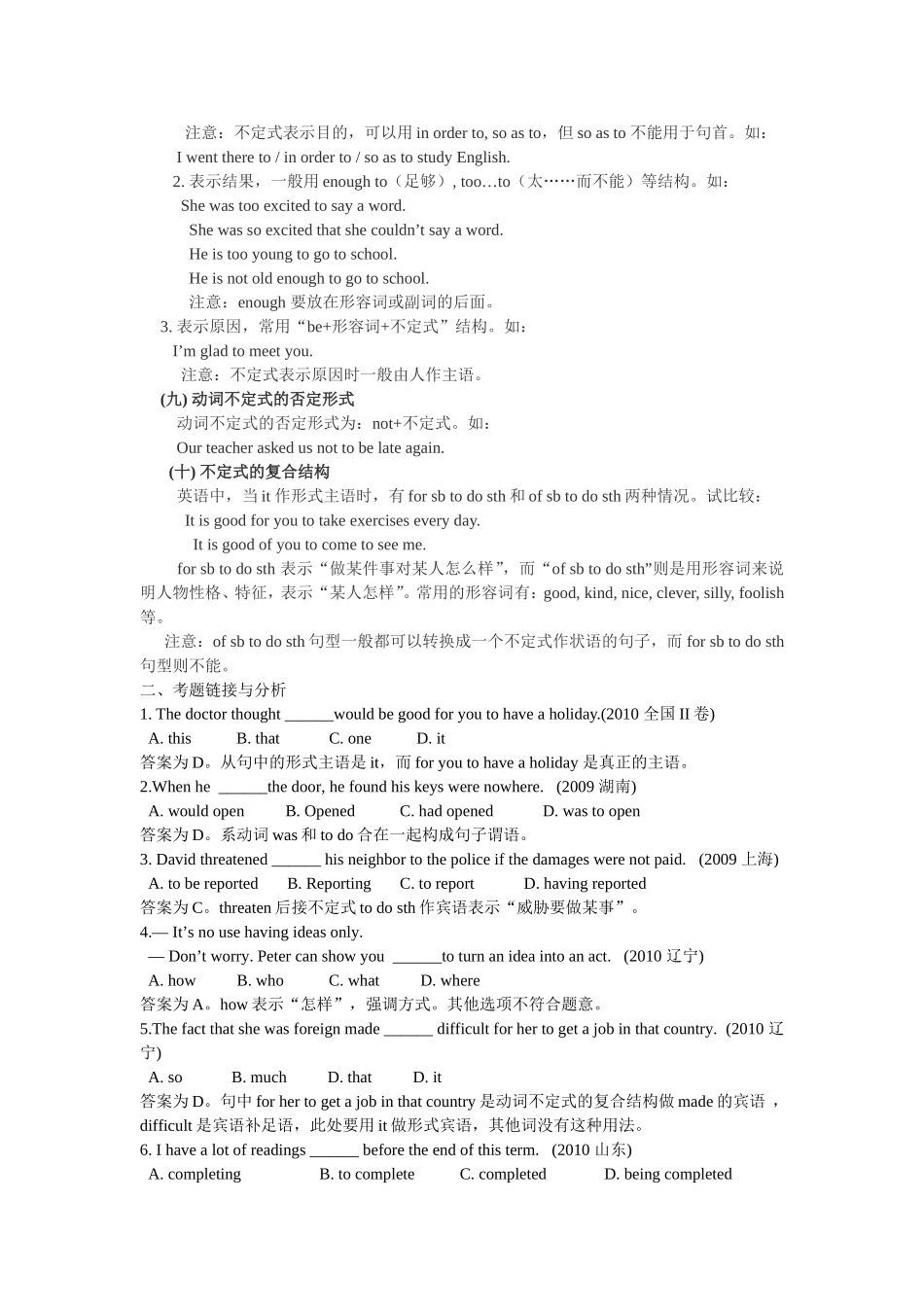不定式的用法 不定式是动词的一种非谓语形式,它一般由虚词(或称不定式符号)to 作为标记,如 to study, to work 等,但在某些情况下也可以不带 to。不定式可以有自己的宾语或状语。带有宾语或状语的不定式叫不定式短语。下面具体谈谈动词不定式的用法。 (一)动词不定式作主语 动词不定式作主语一定要带 to,谓语动词用单数。如: To answer this question is easy. 为了避免句子“头重脚轻”,英语中往往用 it 代替不定式,作先行主语(形式主语),将动词不定式后置。如: To study foreign languages is very important. It is very important to study foreign languages. 作形式主语的 it 只是一个引导词,没有具体意义。it 在以下句型中也用作形式主语: It takes (sb) + 时间词+不定式+其它,意为“花费(某人)多少时间做某事”。如: It took her three years to learn Chinese. It will take me two hours to finish my homework. How long did it take you to get there? 注意:当动词不定式作主语时,如果是疑问句,通常用 it 作形式主语。如: Does it cost you a lot of money to collect stamps? (二)不定式作表语 不定式用于 be 动词后作表语。如: My wish is to become a scientist. 注意:不定式作表语,to 常省略。如: All I did was (to) press the button. (三)不定式作宾语 不是所有的动词后面都能用不定式作宾语。在英语中,常用不定式作宾语的动词有:hope(希望), wish(希望), learn(学习), like(想), want(想要), try(试图、努力), ask(要求、请求), plan(打算), decide(决定), start(开始), manage(设法), agree(同意), intend(打算、意欲)等。如: They all want to watch the football game. It started to rain when we got home. He tried to move the table but couldn’t. 注意:He used to go to school by bus 中的 used to go 不能理解为“to go”作 used 的宾语。事实上,usedto+动词原形(过去经常)是英语中的一种特定结构,用于表示过去经常而现在不再有的习惯。例如: My father used to smoke a lot, but he doesn’t now. 我父亲以前经常抽烟,但现在不抽了。 而“be used to ...


